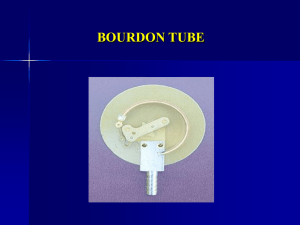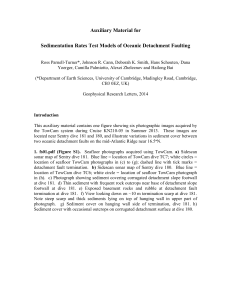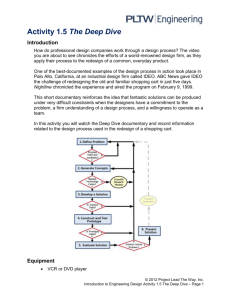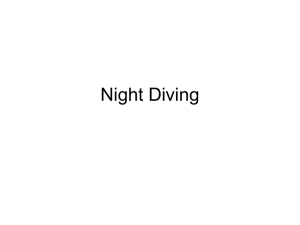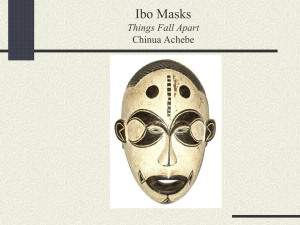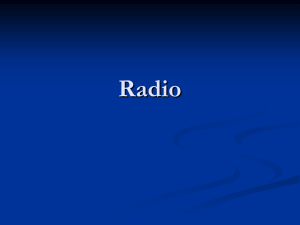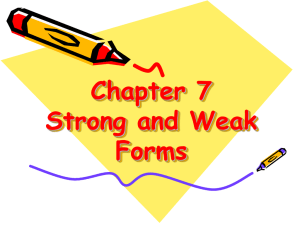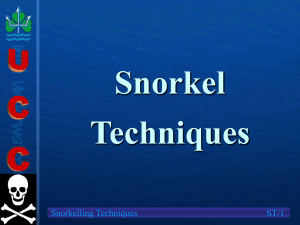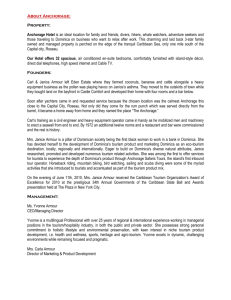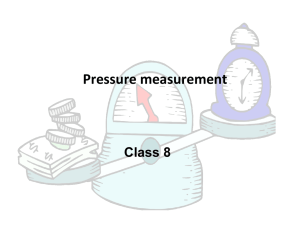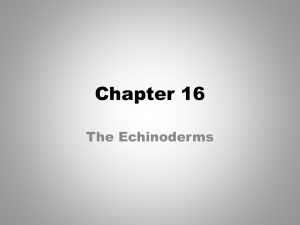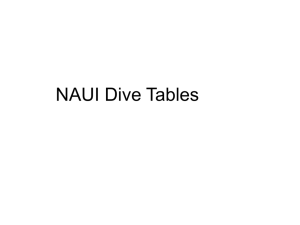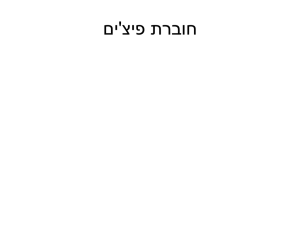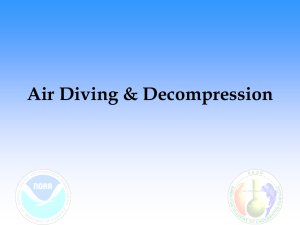Diving Equipment
advertisement
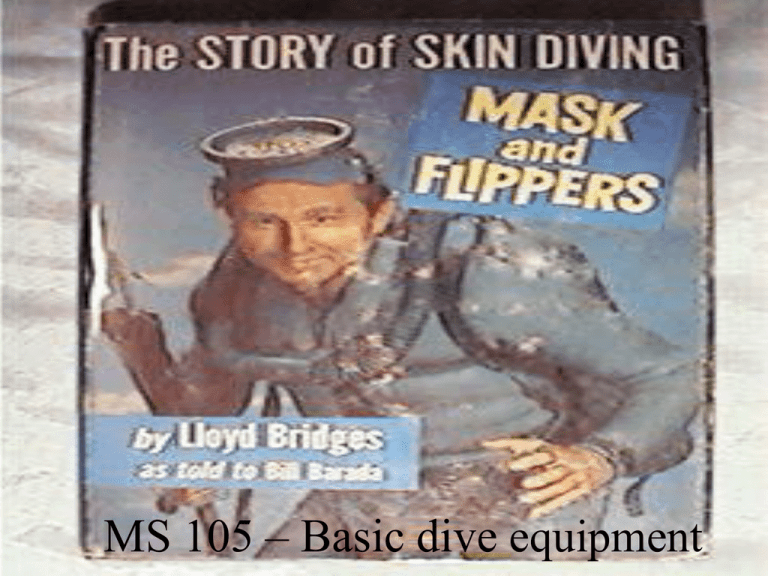
MS 105 – Basic dive equipment Basic Equipment As divers you will need to know the • FUNCTION • FEATURES • SELECTION • CARE of your basic equipment Mask Function – provides a layer of air between the eyes and water to restore vision. ***Note - Underwater objects appear ~33% larger and 25% closer. This is due to Snell’s Law of Refraction – the refraction of light moving from one medium (water) to another (air inside your mask) and the differing of speed of light in varying media. Mask Features • Safety or tempered glass – not plastic. Held in place by plastic ring for easy replacement. • Low volume – easy to equalize pressure and to clear, especially for skin diving. • Wide view/Side lens • Double skirt – for face seal • Nose pouch/finger pockets – to aid in equalizing pressure • Split strap • Prescription lenses (optically corrected)– can be mounted on inside of the mask or special lenses made. Contacts can be worn if eyes are closed when mask is flooded. • Clear Silicone – + clear lets more light in - glare (opaque) Mask Selection – fit and comfort are the most important. Try a variety on before making decision. Hold to face and inhale. Try with reg. in mouth. Care • Avoid extended exposure to direct sunlight • Rinse after use, use soapy water if you have sunscreen residue build up. ¿ ¿ ¿ ¿ Defogger – Sí o no??? Cost ≈ $25 - $80 & ↑ Snorkel Function – simple breathing tube which allows divers to breath with face in water. It is tiring to lift head. Features – • • • • • • • J-shaped most efficient snorkle has shortest, smoothest flow of air. Flex-type + easy to get in mouth -restricts air flow and traps water which facilitates fungal growth Angled/Wrap around fits close to face, less drag Shot gun purge valve clears ‘most’ of snorkle Big bore improved air flow ~ 7/8” diameter. Contoured mouthpiece moldable teeth grips Snorkel tab/keeper on left side of mask Snorkel Selection – do not get one that is too small/large of a diameter Care - Rinse, don’t crush Cost ≈ $15 - $40 Fins Function – provide increased mobility and efficiency in the water. More power and thrust with minimum effort. Features – • Adjustable strap – should have locking devices • Vented fins – water flows in areas of resistance • Split fin – more thrust underwater, not always on surface may have less turning ability. What to consider when selecting fins • Construction – durability pvc, rubber, etc • Heels – open vs. closed • Size and stiffness - largely dictate a fin's efficiency • Other factors include skill level and conditioning • Ability Level Fins selection criteria – • Based on diver’s size, strength and intended use • Fit and comfort, no cramping. If dive shop has a pool try them out. Care • Avoid straining straps when donning fins • Same as other rubber products Cost ≈ $30 - $120 Booties • Nylon covered neoprene • Come in various thickness – 1/4” minimum (7mm to 10mm) • Come with various soles • NO ZIPPERS – get filled with sand Features: • • • • • • Dive Knife Handle Blade – non-corrosive Serrated edge Line cutter Sheath Straps Underwater Watches • Minimum for monitoring bottom time • Must be water resistant well over diving depth (100m+) • Analog vs. digital – Analog » Screw down crown » Heavy construction / self winding » Luminous dial » Bezel *** costs to replace batteries – Digital » Light » Must be set » More expensive » More subject to failure Seiko $120-250 Casio $25-60 Casio $25 Freestyle $35 Where to purchase Monterey Monterey Bay Dive Center - http://www.montereyscubadiving.com/ Aquarius Dive Shop - http://www.aquariusdivers.com/ Bamboo Reef - http://www.bambooreef.com/ Santa Cruz – Adventure sports - http://www.asudoit.com/diving/index.html Aqua Safaris - http://www.aquasafaris.com/ Heat Wave (custom) http://www.heatwavewetsuits.com/hwhomepage.html Bay Area– San Jose – Any Water sports Dive shop 408 244 4433 Oakland – Steele’s Phone: (510) 655-4344 Worth checking out http://www.officialdivegearpage.com/ http://www.montereyexpress.com/DiveLinks.htm *** SCUBA MAX Bottom Timer • • • • • • • Current Depth Maximum Depth Total Dive Time Water and Air Temperature Rate of ascent- some more $$ models Surface Interval Logbook – some more $$ models KEY ADVANTAGE MOST TIMERS START AUTOMATICALLY Capillary: Depth Gauges • Nonlinear scale – harder to read at deeper depths • Bubbles can invalidate readings • Open – debris can block tube Air/Oil-filled Bourdon tube: • A c-shaped or spiral tube used in pressure (depth) gauges. Increased pressure acts on the tube by changing its shape. This movement is used to change the position of a gauge needle • Some have reset needle which marks deepest depth if zeroed at start of dive Digital: • Based on above gauge type linked to display with microchip technology Bourdon Instruments • Movement gauge – flattened helical tube open at one end and pressure uncurls it. Free end attached to a needle. • Open – tube end exposed to water • Sealed Tube – tube is fluid filled and end plugged with rubber diaphragm •Oil-filled Bourdon tube –both ends plugged and tube in oil VS •Diaphragm – does not use bourdon movement, only a diaphragm Submersible Pressure Gauges Features: • Attaches to first stage with high pressure hose and provides continuous readout of pressure • First came out in 1954 but nobody used it. resurfaced in 1966, now standard/required equipment. • Fits into console • Luminous • Readable at low pressures ‘red zone’ • At 500psi, have accuracy range of +/- 35-100psi Compass Features: • • • • • Lubber line Bezel Readability Fits into console or on arm Luminous dial Cost ~35-40.00$$ Weight Belt Features: • Quick release • Lead Weight • Many weights and sizes (plastic coated, lead shot i.e. “soft vs. hard weight”) • Clips • Harness Exposure Suits (wet vs. dry) Features: •Wet vs. Dry Thickness – 7 mm(minimum for central coast north) -10mm Material – Neoprene Skin-in vs. plush/lycra Two piece vs. one piece Attached hood vs. non-attached Zipper placement Modern BCD – Buoyancy Compensating Device Features: • • • • • • • • Large volume Mouth piece for oral inflation Power inflator Overpressure relief valve Shoulder straps D-rings Integrated weights Gear snaps Gear Bag, Duffle or Box • One that can hold all dive gear VS. Action Packer Rollie bag Mesh Goodie Bag • One that can hold fins, mask snorkle Save-a-dive Kit • • • • • • • • O-rings Extra straps (fin and mask) Extra mouth piece Cable / Zip ties Pencils 1st stage port plugs Scuba tool Mouth piece Dive Slate • • • • PVC Plastic Clip Pencil on bungie or string Research Slate allows addition of paper MLML Slates -$15.00 Safety Sausage • Roll-up sausage for BC pocket • Increased visibility on surface
